
Travel to Peru is undoubtedly one of the greatest desires of tourists worldwide, and it is truly a great world destination because it has a large number of landscapes, and is the cradle of the largest empires that dominated this part of South America. The Incas, who built huge stone buildings, have left valuable archaeological treasures that currently fascinate every visitor who arrives in Peru. This amazing country is located on the east coast of the South American continent, next to the Pacific Ocean.
It is a unique, multicultural and colorful destination, a country full of contrasts that come to light, such as its diverse culture, history, geography, biodiversity and gastronomy; from the coastal lands of the capital and the dunes of Ica, crossing the Andes Mountains to the Peruvian Amazon.
If you are going to travel to Peru on your next vacation, take into account that you must spend at least 8 to 10 days, to be able to visit its greatest archaeological and scenic attractions, Peru is home to the citadel of Machu Picchu, one of the seven wonders of the world, located on the outskirts of the city of Cuzco in the edge of the forest. And although Machu Picchu is one of the most visited sites in Peru, it alone is not enough to fully understand this exotic country.
As one of the largest countries in South America, Peru’s landscape is diverse. In the east, you have the exotic Amazon jungle, where you can explore the great national parks such as Pacaya Samiria in Iquitos, the Manu National Park in Cusco, both scenarios are located in the great Amazon plain, where biodiversity is wide and life unique wild. The Andes mountains divide the country in half, inviting the most courageous hikers to approach them. Among the most visited mountain landscapes are the Huaraz mountain range, the Ausangate snow-capped mountain, and one of the most famous is the hill of seven. Vinicunca colors. Also in the Andes is the highest navigable lake in the world, Titicaca.
Travel to Peru also includes the extensive desert plains of Ica, Lima, Lambayeque and Piura where there are beautiful beaches, and the best gastronomy of marine products, of which the most famous dish is Ceviche, an essential place that you should visit In Peru, it is the museum of the Lord of Sipan, in which the largest collection of gold and silver objects from the Mochica culture are exhibited. An unpredictable destination are also the famous Nazca lines in Ica, which were designed by the Nazca culture. In summary, we can say that Peru has the largest number of options in landscapes, cultures and its already famous gastronomy, making this country the greatest power of tourism in the world.
There is an incredible amount of interesting history easily accessible to any traveler. Whether it is through visiting a museum, wandering around a town or village, or hiking to one of the hidden Inca ruins, you will always be surrounded by the strong presence of history and its cultural influences. The ancient Inca ruins are considered to be some of the most beautiful and mysterious sites in the world. You’ll find some of their most impressive ruins in the Sacred Valley and Machu Picchu, which are best experienced when hiking the Inca Trail. But the Inca ruins are not the only remains of ancient civilizations. On the north, you can find ancient civilizations in the city of Chan Chan, while in the south, you can find interesting evidence of ancient cultures at Lake Titicaca, the city of Puno, and the Nazca Lines.
Since the arrival of the first inhabitants from North America after the last Wisconsin glaciation, Peru began to be occupied by farmers and hunters. Around 5,000 BC, the towns of Sechin and Casma arose, where the first sedentary villages began, and a theocratic society would also begin, for which the family nuclei were divided into classes and castes; In the deserts of Lima, the oldest culture in South America arose, we are referring to Caral (4,000 BC), these settlers erected large temples and pyramids to worship their deities, and so on, there is an explosion of many regional cultures throughout and width of the Peruvian territory, highly appreciated for its vast geography and climatic conditions.
The greatest cultures that left amazing buildings that you can currently visit are the pyramids of the sun and the moon of the Mochica culture in northern Peru, where there is also the largest museum of gold and silver in Peru, the museum of the royal tombs of the Lord from Sipan. The largest mud city Chan Chan is also very famous. To the south you have the famous Nazca lines, the Cutimbo chullpas in Puno, and the ancient Inca constructions in Cusco. The little-visited attractions are the Kuelap fortress and the Karajia sarcophagi located in the jungle zone of Peru. In this sense, Peru is one of the matrixes of world culture, since in its territories more than 4,000 varieties of potatoes have been domesticated, 300 types of corn, a long list of fruits and vegetables, which humanity currently enjoys. of its protein and vitamin benefits.
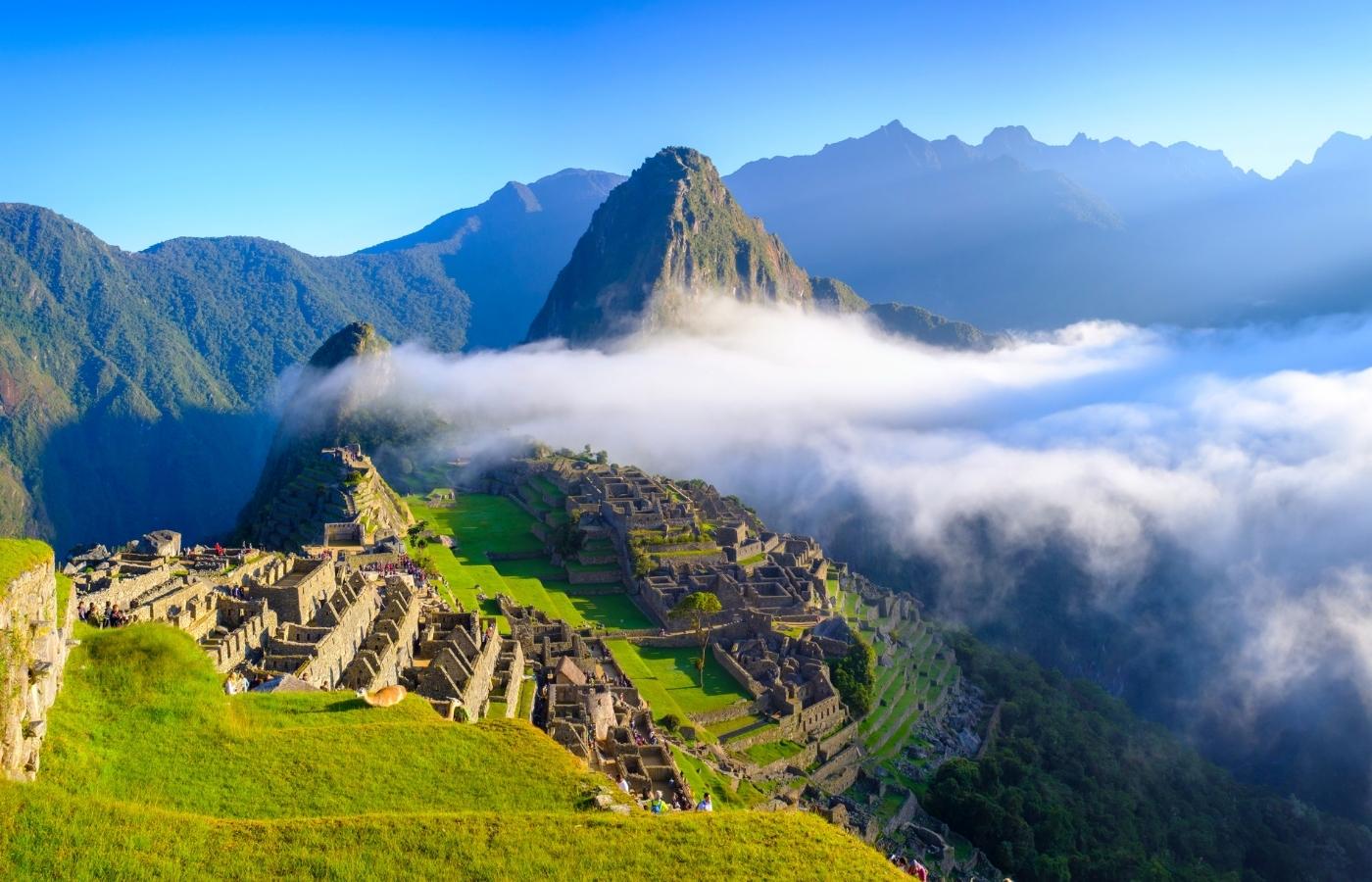
Most travelers to Peru are most excited to see the Historic Sanctuary of Machu Picchu, which is 80 km northwest of Cusco. Machu Picchu has its own unique glamour. In 1983, UNESCO named it a World Heritage Site, and in 2007, it was chosen as one of the New Seven Wonders of the World. It was built with polished dry-stone walls in the classical Inca style, and most of its outlying buildings were restored with the aim to show tourists the original scene of Machu Picchu as much as possible. This Inca citadel was built in the 15th century on the top of a mountain at an altitude of 2430 meters above sea level. It has a beautiful view of the Sacred Valley and the Urubamba River, which surrounds it on three sides and is where morning mists rise. Therefore, the site is the perfect combination of natural beauty and cultural significance. Machu Picchu is the most popular tourist destination in Peru and one of the most popular in Latin America. It is the most well-known symbol of the Inca civilization and one of the most important archaeological sites in South America.
The ancient city itself is made up of more than 150 buildings, including temples, sleeping quarters, and bathhouses. Discover the emblematic Temple of the Sun, one of the most prominent buildings here, and make your way to the Sun Gate viewpoint, a panoramic spot from which to admire the ruins. The truly adventurous may want to attempt the famous Inca Trail hike, a multi-day journey through the mountains that many consider one of the best ways to arrive at Machu Picchu. Other trails include the hike up Huayna Picchu and the moderate Salkantay Trail that connects the ancient capital of Cusco to Machu Picchu.
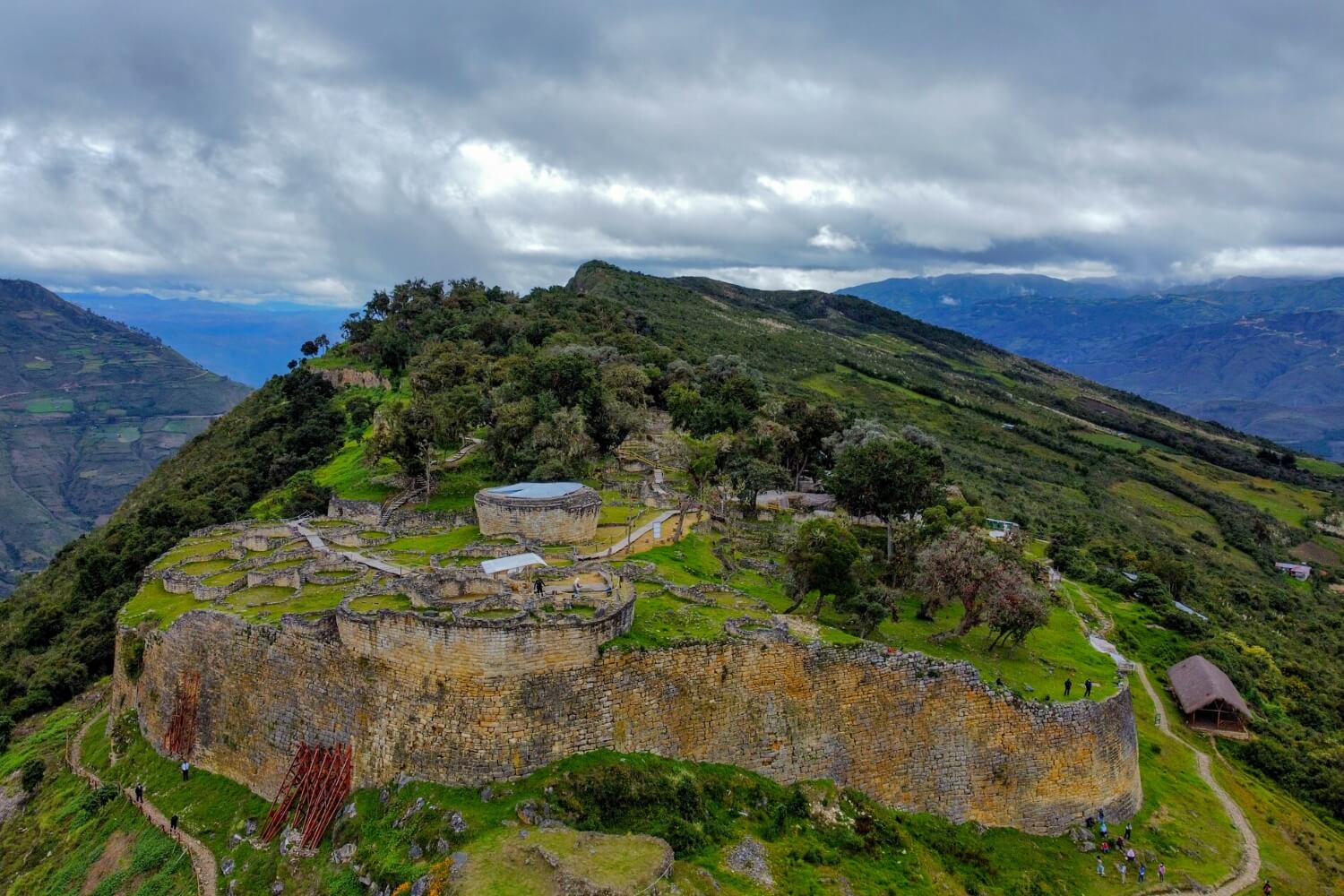
The Kuélap fortress is built in an area of beautiful landscapes that combine the heights of the Andes and the Amazon jungle, creating an incomparable spectacle. Located at 3000 m a.s.l. no. m., on top of a mountain that dominates the narrow valley of the Utcubamba river, this imposing fortress, of six hectares of extension, is one of the largest in America.
The enclosure is made up of retaining walls that form the platforms that give the impression of being a gigantic wall that protects this site since in some sections it reaches 30 meters in height, an impression that is also reinforced by the presence of architectural elements identified as surveillance posts, a tower and three narrow entrances, two of them oriented towards the east and the third towards the west. The entrances are long ramps excavated inside the platforms that have the peculiarity of being funnel-shaped, with an initial width of 3 meters on the outside gradually narrowing to 70 centimeters on the inside exit, thus forcing entry of only one person at a time, which has been understood as a measure of control and defense.
The construction of Kuelap was a great challenge for the Chachapoyas (1000 to 1400 AD) due to the difficult location and the amount of material required to erect the fortress. The walls are made of limestone, worked with yellow clay mortar. It is estimated that just to build the two main walls, more than 100,000 blocks of carved rocks were required, weighing more than 10,000 tons.

About 250 miles south of Lima lies the dry and dusty Nazca Desert, stretching between the towns of Nazca and Palpa. Visitors come here to take scenic flights over the plateau to see the enormous geoglyphs, or land drawings, that archaeologists believe were created by the local Nazca people between about 500 BC and 700 AC. There are over 800 straight lines and 300 geometric patterns that stretch across the plain. Finally, there are over 70 depictions of plants and animals, some of which are over 1,200 feet long. Are they ancient religious artwork? A constellation chart to track the stars? Or a long-lost alien landing strip?, and many of which have been nearly perfectly preserved, thanks to the climate.
The Nazca Lines remain one of the world’s greatest mysteries. Researchers have been studying them for decades, but nobody has been able to explain what they are or why they were built. Why did the Nazca people make these famous geoglyphs.
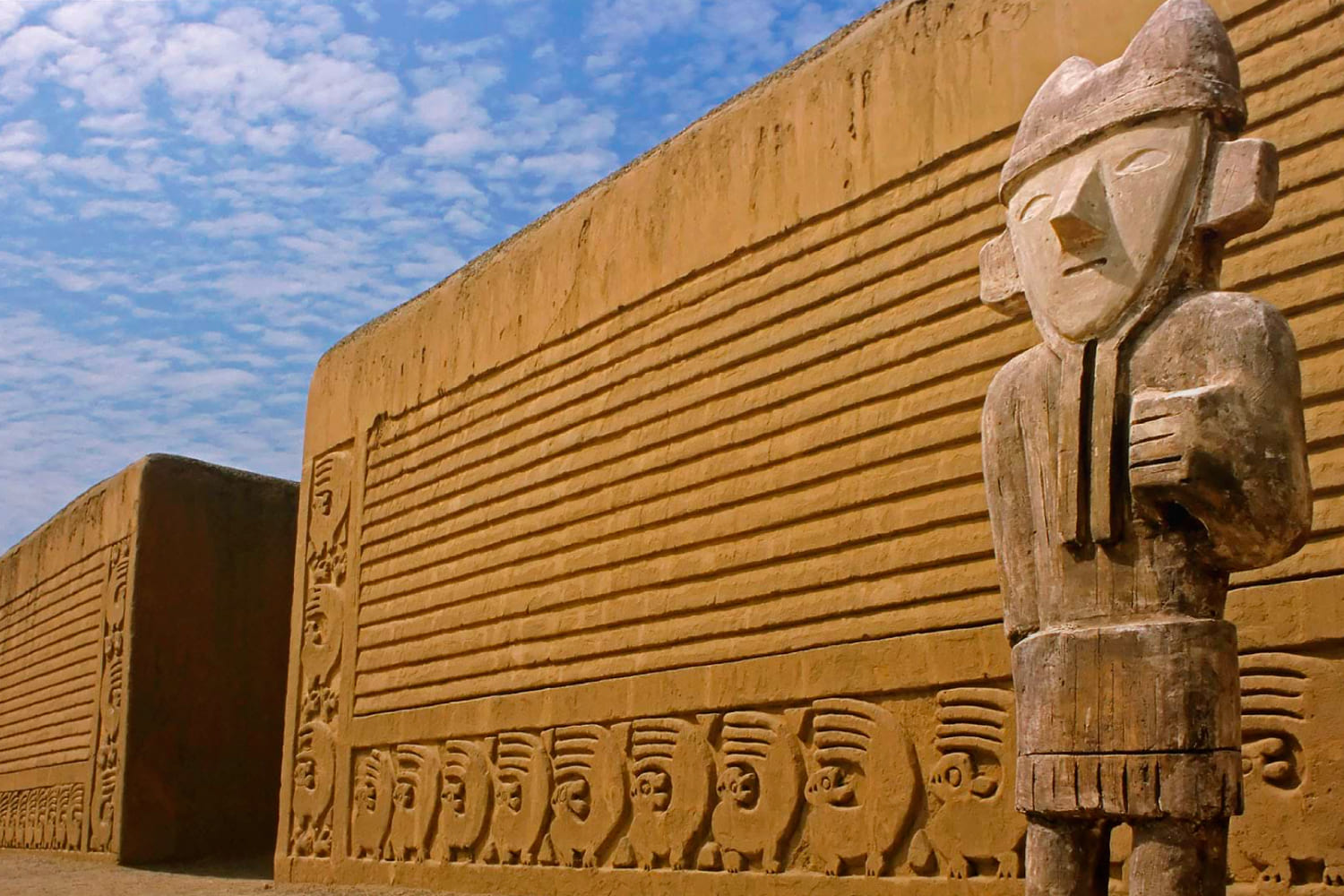
Between the years 600 and 700, on the northern coast of Peru, models of cities arose that did not share the main similarities of other towns. This avant-garde style was imposed by the Chimú Kingdom, in charge of giving life to the city of Chan Chan. Composed of nine small citadels whose streets and narrow passageways lead to wide squares, terraces and truncated pyramids, revealing the remarkable degree of planning of the Chimú.
This set of buildings was the capital of the Chimú kingdom, a state organization that depended on the Chimú culture, and its walls are made entirely of adobe (mud mass composed of clay and sand, mixed with straw and dried in the sun) in its entirety. In these buildings, the members of the Chimú culture demonstrated their ability for constructions (with their formidable engravings, bas-reliefs and details that can be witnessed to date), in addition to being ahead of their time due to the quality and finish in their preparation. of textiles and stand out in the creation of metallurgical articles.
Currently, the archaeological site that makes up the city of Chan Chan has an approximate size of about 20 square kilometers, in which we can find walled complexes, which are considered palaces, in the entire extension of the metropolis. The houses of Chayhuac, Pequeña, Nueva, del Centro, Este, Oeste, Grande, del Norte, del Mar and de las Aves are the ones you can find on your visit to this adobe city. Also, rooms were found in which domestic activities such as the use of fulling mills, stoves and ceramics were practiced; in addition to more than 140 water wells that supplied the entire population.
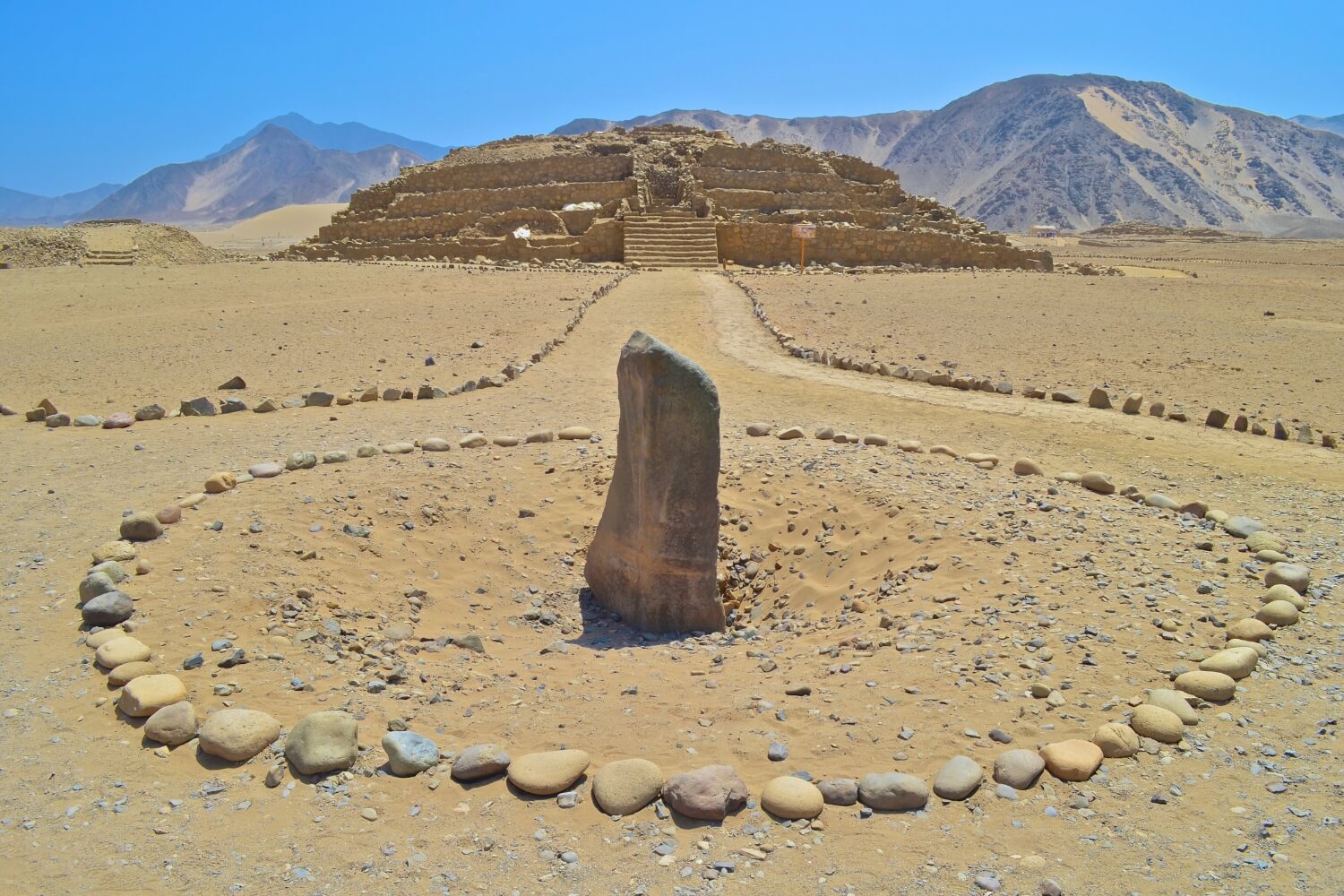
One of the most important and yet little-known cultures of the American continent is found in Peru. It is about the Caral culture, located in the Supe valley, on the north-central coast of Peru, an archaeological site of 66 hectares, one of the largest in America, and about the civilization that built it, the Caral culture, considered the oldest in the American continent. The Carals based their economy on agriculture and fishing on the Pacific Ocean coast, in the so-called Supe port. In the region, small settlements began to develop very quickly between 3,000 and 2,700 BC, which interacted with each other and exchanged products, even with other more distant populations.
The Caral were an advanced society that developed great scientific and technological knowledge that they transmitted to other neighboring cultures. They did not live-in walled cities or manufacture weapons, but they did exchange resources, goods, and knowledge with populations in the mountains and jungle. Likewise, they had access to the Spondylus mollusk, very characteristic of the tropical waters of Ecuador and which played an important role in Andean societies; they also obtained sodalite, a mineral that comes from Bolivia.
The buildings were built with stone and wood from fallen trees. Six pyramids have been preserved, each one with a central staircase that is oriented towards certain stars. All these buildings had an altar with a central fire (circular or quadrangular in shape) and underground conduits that channeled the energy of the wind. In these complexes, religious ceremonies were to be carried out that included the burning of offerings to the divinities. But some of the most striking constructions are its two enigmatic circular squares, located in front of two pyramidal buildings. Quite possibly also related to religious ceremonies.
At the top of a green mountain between the departments of Cusco and Apurímac, is the famous archaeological park of Choquequirao, the same one that impresses the eyes of its visitors due to the majesty of its Inca architecture. Its platforms, squares, enclosures, large walls make this mystical and legendary place a mandatory tourist spot. Choquequirao has a temperate climate, with an average annual temperature of 16°C. However, being close to the Apurímac Canyon, it can have warm moments. Between the months of April and August the weather is usually dry and at night it becomes cold.
Choquequirao is made up of nine sectors, in which a political-religious center stands out, you can also see an upper main square, buildings, fountains, warehouses, giant stairs, sacred corrals, houses of the rulers, a temple of the triumphal wall, temple of priests and different types of monumental platforms, among others. The construction of Choquequirao can be attributed to the successors of the Inca Pachacútec, Tupac Inca Yupanqui or Huayna Cápac, between the 15th and 16th centuries. The place was a meeting point for public and ceremonial ceremonies, such as the worship of the Sun god, the earth, the water, among others. Due to its location, it is likely that it was the most important religious center and that it was occupied by priests and those consecrated to the divinities. There is a hypothesis that it could have been a control point for entering the Vilcabamba area. Choquequirao is considered one of the last bastions of refuge of the Incas, who on the orders of Manco Inca, left the city of Cusco to take refuge in the Vilcabamba region.
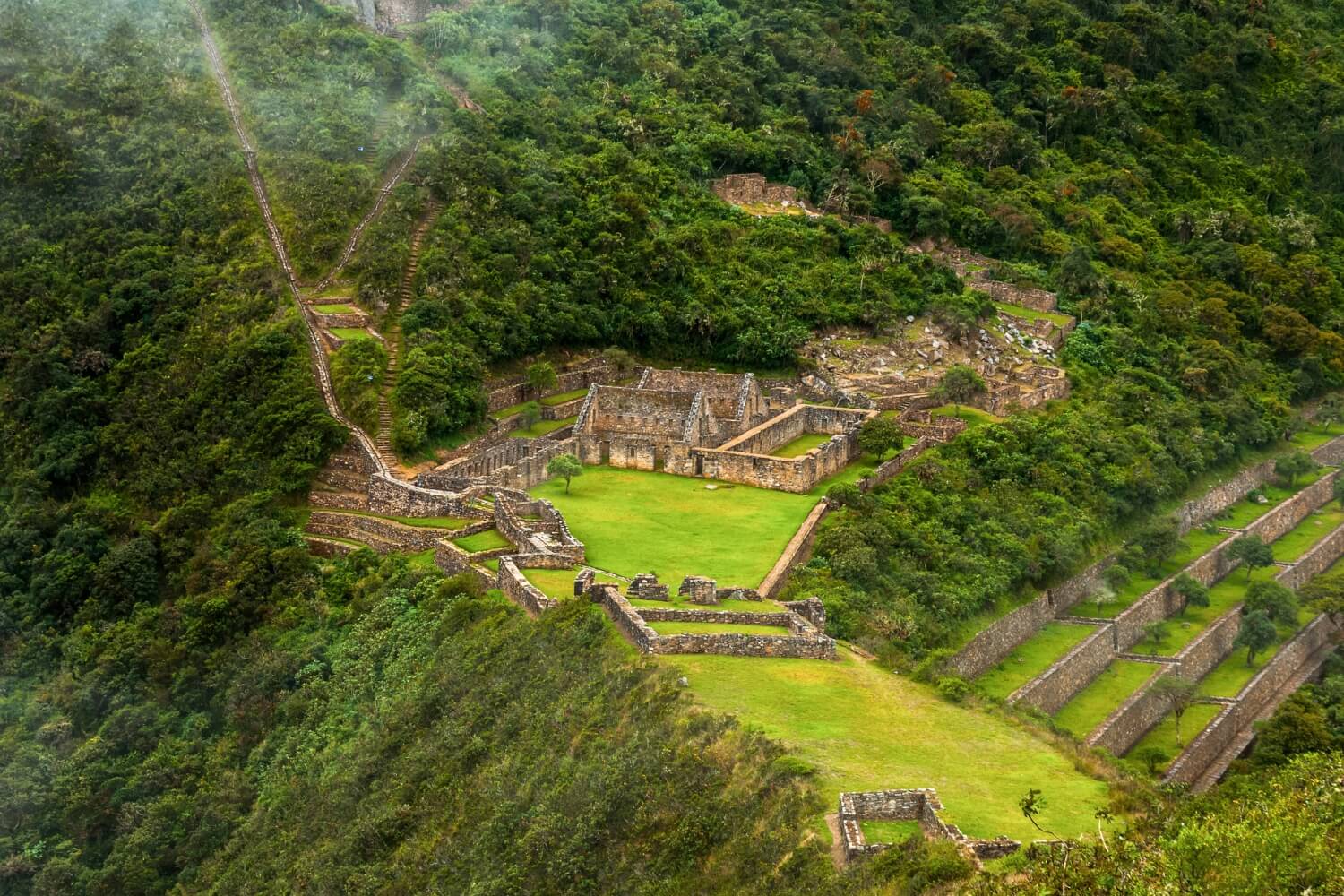
As is already known, Peru is a country that has great cultural diversity of languages, costumes, typical dishes and traditions that will offer you a different way of seeing life and the world around you, all thanks to the existence of different ethnic groups in its territory, this diversity gives the country a dynamic character, rich in cultures, traditions and history, such as the Quechuas of the Andes or Aymaras of the Altiplano. In Peru, 1453 dances have been registered, according to the dance blog of Peru. These dances are the manifestation of our culture and are expressed in patron saint festivals, processions and carnivals, etc. All of them produced throughout the year in each of the departments of this country.
The multicultural wealth throughout history has kept alive the festivities and festivals of the communities, whether national or religious, where rituals, rhythms and their gastronomic heritage are expressed. In Peru, around 23 parties are held a year, a spectacular reason to travel to Peru at any time or month. The largest party in Peru is held in the department of Puno, we are talking about the Festivity of the Virgin of Candelaria, it is a very popular and colorful party with a great number of people, it brings together around 30,000 dancers and 8,000 musicians, grouped in no less than 175 folk ensembles.
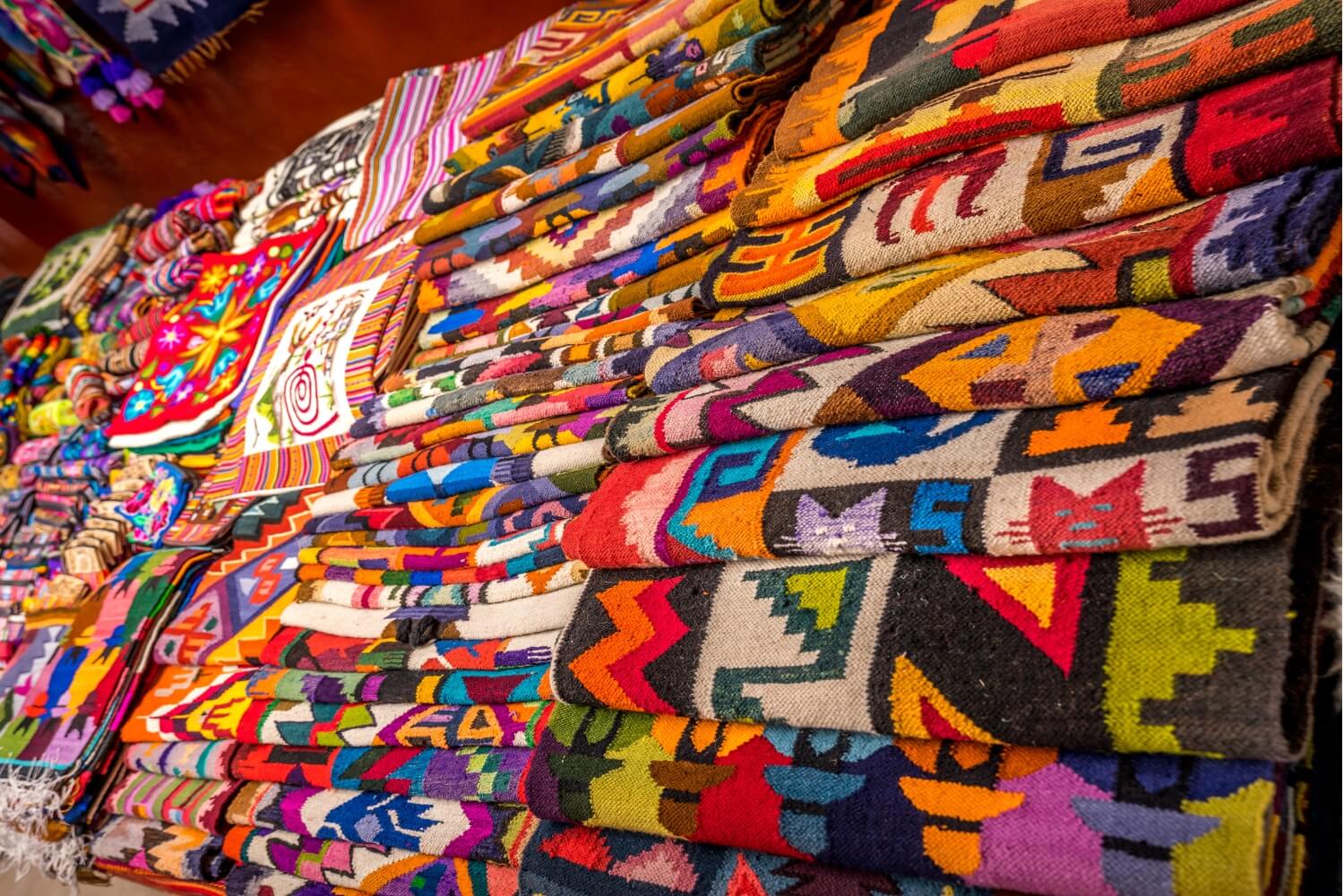
It is not possible to travel to Peru and not return loaded with handicrafts. And it is that, without a doubt, this is one of the best places on the continent to buy products made by hand, since the ancestral culture is very present and traditional techniques are still used. The Chullo, the typical brightly colored hat woven in alpaca and other fibers, has become an icon and one of the favorite garments for travelers visiting Peru. Handmade, in an artisanal way, with dark circles and originally from the Andean area, it allows you to cover yourself from the cold and wind. Likewise, they usually buy gloves and ponchos also made of very soft and light alpaca.
It is equally interesting to get hold of other textile products such as scarves or rugs, especially from the Sacred Valley area, near Cuzco. They are made with wool from local sheep that are dyed and woven by hand. Silver jewelry objects, such as earrings or Andean crosses, are other great typical souvenirs, along with ceramics and vases, figures and containers, as well as brass carnival masks.
Peru is the main producer of South American camelids in the world with more than 5 million heads among four species (llama, alpaca, vicuña and guanaco). Of these four species, the llama and the alpaca are domestic species, while the guanaco and the vicuña are wild species. Camelid breeding is one of the most important productive and economic activities that takes place in the Peruvian high Andean zone. Alpaca fiber is one of the finest in the world and is superior in quality to cashmere and sheep’s wool, which is why it is preferred for making sweaters, sweaters, skirts, among other garments; also, accessories such as bags, wallets and straps, and even tapestries and rugs.
As long as you visit the city of Cusco, you will be able to observe people in the streets, mostly women and girls walking with their llamas and alpacas, but for strictly photographic reasons, for all tourists who wish to take a photo, at least which they will ask for a voluntary collaboration. There is a very important issue to clarify, since they often bring very premature alpacas and sheep, which with the passage of time could die, before this we are against animal abuse, it is requested not to promote this type of activity, just take the photos in the permitted circuits, such as in the Sacred Valley of the Incas or in the Colca Canyon, where there are original settlers who raise their animals, and they only take adult alpacas and llamas.

It’s always interesting to meet new people and to experiment with new cultures, but Peruvians make this act an even more interesting and enjoyable experience. Many Peruvians still have a direct link with their Inca ancestors, proudly conserving the Quechua culture that is so important to Peru’s past. Most people are hard workers, extremely polite, peaceful, helpful, and curious about the interest of their visitors. Many of them have never traveled out of the country or even out of their cities or villages. Sharing stories with them makes for an interesting learning experience about the country and about their tales.
Peru is a multiethnic country formed by the combination of different groups. The people are always welcoming, and incredibly attentive to visitors, with their varied food and many celebrations. They are ingenious, good at singing and dancing, and passionate about various activities. Usually, you can see wonderful performances in plazas and streets at weekends, from which you can feel their amusement.
Cusco is considered the oldest continuously inhabited city in South America. It once served as the historical capital of the Inca Empire from the 13th to the 16th century. It was declared a World Heritage Site by UNESCO in 1983 and designated as the Historical Capital of Peru by the Political Constitution of Peru. You can walk the streets of this fascinating city and admire the tangible links between its pre-Columbian past and the well-preserved colonial architecture, from which you can learn about its rich and complex history. You can also see some indigenous people in traditional clothes on the streets. In addition, you can also immerse yourself in the exciting nightlife.
As the ancient capital of the Inca empire, Cusco is one of the best reasons to visit Peru. The historic center of Cusco has retained much of its original Inca charm. In fact, many of the original Inca buildings can still be seen in Cusco, giving visitors a glimpse of the impressive construction techniques used by the Incas. The most famous Inca landmark in Cusco is Qorichancha, which translates as the Golden Temple in Quechua, the native language of the Incas. It was the religious center of the Incas where they could honor one of the famous important gods Inti, the Inca sun god.
Two kilometers from the main square of the historic center, visitors will also find the Inca ruins of Sacsayhuaman, one of Cusco’s fortresses. This Inca citadel on top of a hill Perched on a hill, this was one of the most impressive citadels ever built, especially considering how over a hundred tons of giant stone was moved without modern technology. The citadel offers panoramic views of Cusco and the impressive Andean peaks.

The “Inti Raymi” or “Fiesta del Sol” was the largest, most important, spectacular and magnificent festivity carried out in the times of the Tahuantinsuyo Empire, which based its religion on the cult of the Sun. Acllas, Ayllus, the Inca Imperial Army, representatives of each region and other members of the Inca organization, being attended by almost the entire population that made up the Tawantinsuyo. Currently the Inti Raymi is a theatrical performance, thousands of people from Cusco and from all over the world come together to this event that is one of the most important cultural and traditional manifestations in this part of the world.
The Sun in the Inti Raymi means your greatest worship, your essence and your source of life. It is their supreme god and one of the most important stars in the Andean world and it is the one that in this festivity begins a new annual cycle, which for us is the new year. That is why offerings, lands, temples, etc. were dedicated to the sun. because he was the one who fed them, therefore respect and adoration were due to him. In the Qorikancha or Temple of the Sun, start of the Inti Raymi tour with the ceremony called “Saludo al Sol”. This first part begins with the sound of the Pututos and the entrance of the Acllas, musicians and dancers, to later welcome the Inca. Duration approx. of 1 hour. In the Plaza Mayor of Cusco or Huaqaypata, it is the second point of celebration of Inti Raymi. Here the ceremony “Meeting of times and ceremony of the coca leaf” takes place, where the Inca and his entourage meet in the great Ushnu or ceremonial stage.
Sacsayhuamán Esplanade, is the third epicenter of Inti Raymi and the central ceremony, since this is where most of the Inti Raymi staging is concentrated, beginning with the entrance of the Qoya and the Inca accompanied by dances, music and chants, to then start the central ceremony with the appearance of the heads of the 4 suyos announcing the state in which their regions are, so that finally the Inca begins the rite of offering, sacrificing a llama in honor of the God sun. The first and second performances are free so try to go early as there will surely be a large number of people. The third staging requires the purchase of electronic tickets on the EMUFEC page, if you have difficulties with the purchase of these tickets.

In all aspects related to biological diversity, Peru is among the 10 countries with the greatest diversity on Earth, known as “megadiverse countries”, due to its diversity of ecosystems, species, genetic resources and aboriginal cultures with outstanding knowledge. Peru has a very high ecological diversity of climates, ecological floors and production zones, and productive ecosystems. In terms of forest area, it is the second country in Latin America and the fourth worldwide, and it has 13% of the Amazonian tropical forests. 11 ecoregions are recognized, which include the cold sea, the tropical sea, the coastal desert, the equatorial dry forest, the tropical forest of the Pacific, the steppe mountain range, the puna, the paramo, the high altitude rain forests (high jungle) the Amazonian tropical forest (low jungle) and the palm savannah. Of the 117 recognized life zones in the world, 84 are found in Peru. In the national territory there are ecosystems recognized worldwide for their high diversity of species such as the cold sea of the Peruvian Current; the dry forests on the north coast; The puna; the high jungle, and the Amazonian tropical forests, where the diversity of species reaches its maximum expression.
It is a complete natural paradise, it is estimated that the country has some 25,000 species of flora and tops the list of plants for population use and native domesticated species, Peru is credited with great agricultural contributions such as potatoes and corn. The fauna has more than 5,400 animal species distributed among mammals, birds, reptiles, fish, butterflies and amphibians. A whole native and wild landscape that invites you to travel through Peru.
Peru has a very high diversity of species, despite incomplete records and fragmented.
Peru has a high genetic diversity for being one of the world centers of origin of agriculture and livestock, and, consequently, is one of the centers world’s largest sources of plant and animal genetic resources. worth some data:
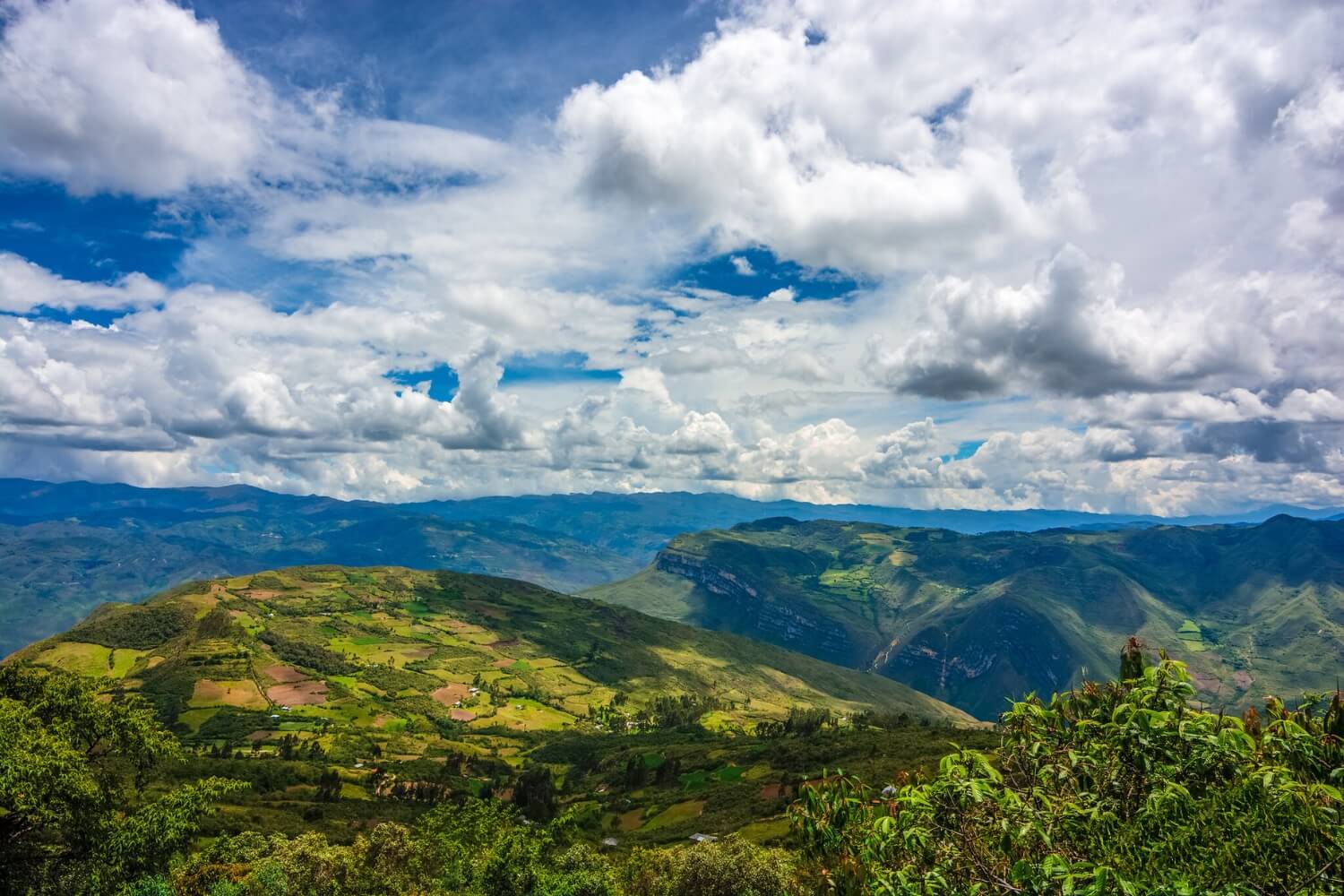
In Peru there are 15 National Parks distributed on the coast, mountains and jungle, conserving more than 15% of the Peruvian territory. Among these spaces we find the Huascarán National Park, which, with its 16 snow-capped peaks over six thousand meters high, is one of the most emblematic protected areas, with numerous glaciers and lagoons. It is located in the department of Áncash and is considered the highest tropical mountain chain in the world. If you like sports, you will have a great time trekking, mountain biking, climbing, skiing or fishing. Very different is the Cerros de Amotape National Park, to the north, the best preserved area of equatorial dry forests in the entire Pacific region. Crossed by the Tumbes River, it is almost an oasis next to the coast of native vegetation, where American crocodiles, otters and hundreds of species of birds live.
Other Peruvian parks are the Cordillera Azul national park, between the Andes and the jungle, which enjoys special tourist protection, due to the delicacy of the groups that inhabit it, and Cutervo, in the department of Cajamarca and its more low, where the cloud forest predominates. The Cueva de los Guácharos is its great attraction, where speleology is usually practiced. For its part, the Manu Natural Park, located in the departments of Cusco and Madre de Dios, is very popular with tourists who wish to venture into the jungle. It has a good ecotourism infrastructure and offers interesting tours to get to know the area and the indigenous communities that live there.
Peru is one of the best countries to explore the contrasting landscapes of South America. Here you will find mangrove forests and Amazon jungle, arid deserts, towering mountains and stormy islands. All are protected by Peru’s national park service. But these are not the only protected natural spaces. The list of reserves also includes national sanctuaries, wildlife refuges, scenic refuges, communal reserves, protected forests, hunting grounds, reserved areas, and various other types of protected areas. Peru has a lot to offer, both to residents and foreign visitors. Apart from the natural beauty, wildlife and adventure, this country is the perfect place to create a romantic getaway in the mountains, have a retreat by the sea, camp, eat one of the best cuisines in the world, hike through of history and learn about a new and interesting culture. We hope you enjoy your South American experience to the fullest.
Peru stands out for its exceptional biodiversity, with a wide variety of habitats ranging from the Andes, the Amazon jungle, coastal deserts to the islands of the Pacific Ocean. These diverse regions offer an ideal environment for a large number of birds, many of which are endemic and found nowhere else on the planet. This remarkable richness in birdlife places us in Peru, a megadiverse country and a privileged destination for birdwatching in international competitions such as Global Big Day. Peru was crowned consecutive world champion in the years 2015, 2016 and 2021, adding 1,183; 1,240 and 1,351 species identified, respectively. While, in 2018, 2019, 2020, 2023 he ranked second in the world, getting on the podium behind Colombia.
The towering peaks of the Peruvian Andes provide a home to numerous species of birds adapted to heights. In this region you can find wonderful birds such as the Andean condor, the largest flying bird in the world, numerous hummingbirds, among which the rare and vibrant spatula-tailed hummingbird stands out. On the other hand, the Peruvian Amazon jungle is one of the most diverse and species-rich ecosystems on the planet. This is where some of the most extraordinary birds are found, such as the red and green macaw, the iris-billed toucan and the hoatzin, also known as the “devil bird”.
Contrasting with the Andes and the Amazon jungle, the Peruvian coast has desert ecosystems that attract various species of marine and migratory birds. The famous Paracas, a protected area facing the Pacific Ocean, is home to colonies of Humboldt penguins and numerous seabirds such as the brown gannet and the Peruvian booby. In addition, it is the starting point for excursions to the Ballestas Islands, where visitors can appreciate a wide variety of coastal birds in their natural habitat. Likewise, Peru has stood out for its commitment to the conservation of birds and their habitats. Through the creation of national parks and nature reserves, protected areas have been established to safeguard the country’s biological diversity. In addition, responsible tourism is promoted, providing opportunities for visitors to observe birds without disturbing their natural environment.
The Peruvian birdlife has also aroused the interest of scientists and conservationists. Studies on Peruvian birds have contributed to a greater understanding of the biology and behavior of these species, as well as to the identification of priority areas for conservation. This has led to protection efforts and the implementation of research projects to ensure the survival of these beautiful winged creatures. Peru is a paradise for lovers of bird watching, in this country there are around 1830 species of birds, which is why it is considered the second country with the largest number of bird species surpassed only by Colombia. In addition, Peru concentrates 70% of the planet’s biological diversity.
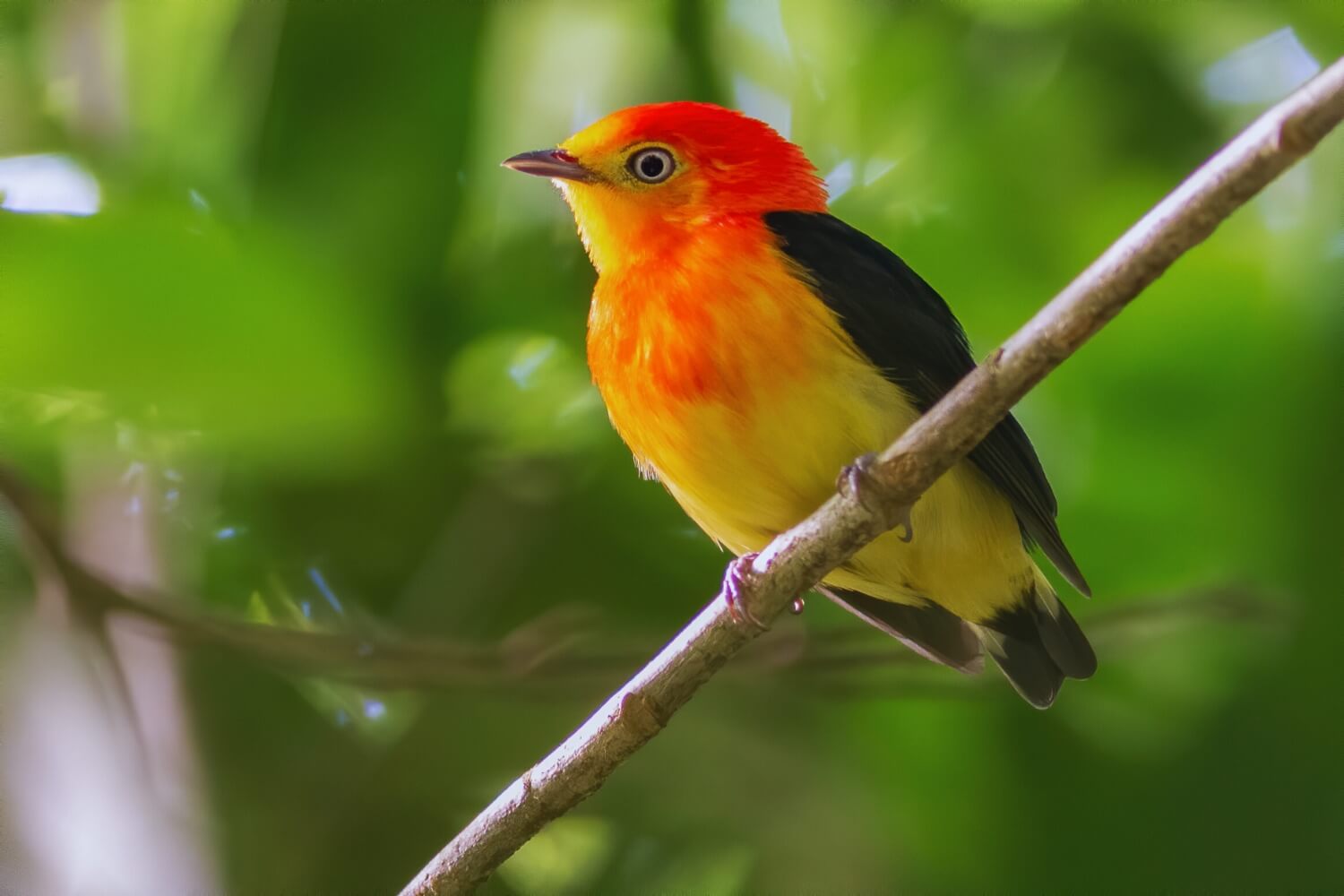
Peruvian food is undoubtedly one of the most recognized and outstanding cuisines; this is due to its native ingredients, a predominant cultural heritage and the good preparation of its cooks and chefs. Peruvian dishes are representative because they still preserve their legacy of indigenous peoples, which makes them owners of a unique and unforgettable cuisine in the world. Being considered the best culinary destination in the world, according to the World Travel Awards (WTA) – something like the Oscars of tourism – for five consecutive years has allowed Peruvian cuisine to be placed in a position of honor in planetary gastronomy. The truth is that the award comes to recognize the quality and multiple variety of local tradition, as diverse as the territory itself.
The great variety of aromas, flavors and products make their dishes conquer the palates of everyone who tries Peruvian food. On the coast, dishes based on seafood and fish stand out, such as a good ceviche, a causa, a seafood rice. In the mountains, products that are highly sought after around the world such as quinoa and maca stand out. Arequipa food undoubtedly gets the applause for its great variety. While, in the Amazon, dishes based on river fish and Sesina, a special preparation given to pigs, are the area’s favorite dishes.
Beyond restaurants run by great chefs such as Virgilio Martínez -his restaurant, Central, is the best in Latin America and the world, or Gastón Acurio, who have given prestige to Peruvian cuisine, the truth is that in any corner we will find places where taste the local food. Dishes such as lomo saltado, Ceviche, Mixed Ceviche, Empanadas from all regions, Tiradito, Butifarra, and Chicharrón are some that you must try. If you are curious to try an Andean delicacy, you can try Cuy meat, Quinoa soup, corn with cheese, Chiri Uchu, the typical dish of Cusco, which dates back to the time of the Incas. Peru has desserts such as purple mazamorra, rice pudding, Suspiro a la limeña, picarones. In Peru each dish is more delicious than the other. If you already end up hungry just talking about Peruvian food, the expectation increases when they describe their drinks to you, the drinks make you addicted to them, such as wines from the Ica region, Pisco, Pisco sour, Chilcano, Emollient, Chicha Morada, Quinoa chicha, Cusco beer, one of the best in the world, among other drinks that will leave you more than satisfied.

According to Dr. Antonio Brack, Peru has a very high place in diversity of fruits with some 623 species, some of them unknown to the world, even to the city man. The coast, the Andean zone and the Amazon region are home to numerous fruit trees. Among the best-known Andean species, the following stand out in the Andean zone: the aguaymanto (physalis peruviana); the capulí (Prunus capulli); custard apple (annona cherimola); Lucuma (Pouteria lucuma); the Pacae (Inga feuillei); Cucumber (Solanum muricatum); the mountain tumbo (Passiflora pinnastitipula); the prickly pear or nopal (Opuntia ficus-indica). Likewise, in the Amazon basin a total of 162 species of fruits have been identified that are regularly consumed by the population, of which about 100 are sold in the city markets, among the best known fruit trees are the arazá (Eugenia stipitata); star apple (Pouteria star apple); the camu camu (Myrciaria dubia); the Ungurahui (oenocarpus bataua); cashew (anacardium occidentale); guarana (paulinia cupana); the huito (Genipa americana); not to mention pineapple and cocoa that originate from the Amazon.
Peruvian fruits conquer the markets. Fruit exports registered shipments to 93 international markets and sales reached 4,806 million dollars during 2022, thus ratifying Peru as one of the main food supplying countries in the world. The products with the greatest global demand are fresh cranberries, fresh grapes, avocados, fresh mangoes, other citrus fruits, frozen mangoes, bananas, and frozen strawberries. Likewise, Peru ranks first in terms of value as the world’s main supplier of blueberries and grapes. For their part, avocados became the third export product.

Peruvian cuisine is one of the best valued worldwide. The success in the different rankings such as the 50 Best Latam. The World’s 50 BEST Restaurants 2023 ceremony brought enormous joy to the Peruvian people. Central Restaurante was chosen as the best restaurant in the world, above giants such as Disfrutar, from Barcelona, and DiverXO, from Madrid. The gala held at the City of Arts and Sciences in Valencia not only crowned the Virgilio Martínez property, it also recognized other Peruvian restaurants on the international list. Maido at No. 6, Kjolle at No. 28 and Mayta at No. 47. Kjolle is new to the top 50 this year. If you are planning a trip to eat in a Peruvian restaurant, here we tell you which are the 10 best:
Address: Calle Santa Isabel 376, Miraflores
Recognized as the best restaurant in the world by ‘The World’s 50 Best Restaurants’ 2023, as the best in the ’50 Best Latam’ and third place in the Summum Awards 2022, Central proposes to know Peru through its inputs and flavors. Virgilio Martínez is committed to enlivening the senses by offering products from fourteen ecosystems and different altitudes, with the aim of highlighting the megadiversity of Peru. These are the experiences he offers:
Calle San Martin 399, Miraflores
Mitsuharu “Micha” Tsumura, the ambassador of Nikkei cuisine, is behind Maido, the third best restaurant in Latin America according to the ’50 Best Latam’ and the 6th best in the world according to ‘The World’s 50 Best Restaurants’. In addition, the fusion that he has achieved between Japanese techniques and ingredients with Peruvian elements has positioned him as one of the best. The restaurant invites its visitors to live three types of experience:
Av. La Mar 1285, Miraflores
Jaime Pesaque’s restaurant offers a personal and contemporary expression of Peruvian cuisine and territory. It has been recognized as the best restaurant in the world according to the ‘World Culinary Awards 2022’, the 47th best in the world according to ‘The World’s 50 Best Restaurants’ and the ninth best in Latin America by the ’50 Best Latam’. Its menu is made up of dishes such as: Duck egg, golden gizzards, chupe rissoto and candied paiche.
Calle San Martin 300, Miraflores
This is Rafael Osterling’s first restaurant and it has reached 32nd place in the ’50 Best Latam’ and fourth in the Summum Awards. This space has allowed it to have more than 20 years of success among the local and foreign public. In addition, his proposal, which is based on lifelong flavors reinterpreted under a deep and cosmopolitan look, has helped a lot to this great fame.
Av. Paz Soldán 290, San Isidro
Ranked 30th in ‘The 50 Best Latam’, Astrid & Gastón is the setting where traditional ingredients, classic culinary techniques and flavors that unite Peruvians, under the supervision of Gastón Acurio and Astrid Gutsche, conquer palates. The proposal includes starters such as the old cause, main courses such as pan-fried sole or guinea pig confit and desserts such as burnt flan.
Av. Pedro de Osma 301, Barranco
In eighth place of the ’50 Bes Latam’, Kjolle receives the name of a tree that grows at extreme heights and this is the kitchen of Pía León, where the colors of the ingredients with origin defined by Mater Iniciativa prevail. In addition, it is characterized by the fusion of products, for example those from the sea meet others from valleys, high altitude lakes, mountains and Amazon forests.
Av. Prolongación San Martín 101, Barranco
José del Castillo’s restaurant makes a space in the ’50 Best Latam’ and is ranked 68th and sixth in the Summum Awards. This restaurant, which bears the name of his mother, opened its doors in 2015 offering grandmother’s recipes, abundant stews and flavors that are a party, that’s Creole food.
Av. La Mar 770, Miraflores
La Mar is the cebichería in which Gastón Acurio shows off his culinary skills, offering dishes in his most classic versions. Cebiches, whole grilled fish and hearty soups; there are options for everyone.
Av. Tudela y Varela 162, San Isidro
Cosme was born in June 2013 at the hands of Alvaro Raffo, Juan Lengua, Guillermo Lohmann and James Berckemeyer. The restaurant had the challenge of offering high quality cuisine with the touch and flavor of home. The cuisine is based on the “comfort food” concept. The name is in honor of the San Cosme hill, one of the first popular neighborhoods that was formed in Lima. The menu offers octopus in olive oil, calf in juice, angus burger, among other dishes.
Av. Felipe Pardo y Aliaga 660, San Isidro / Av. El Polo 660, Santiago de Surco
Osaka is ranked 2nd in the 2022 Summum Awards, its Nikkei cuisine turned into art, has allowed it to win over diners. In Osaka they take care of everything down to the smallest detail, with an experience that has transcended borders, reaching eight cities in the world, always with the premise of sharing around good food.
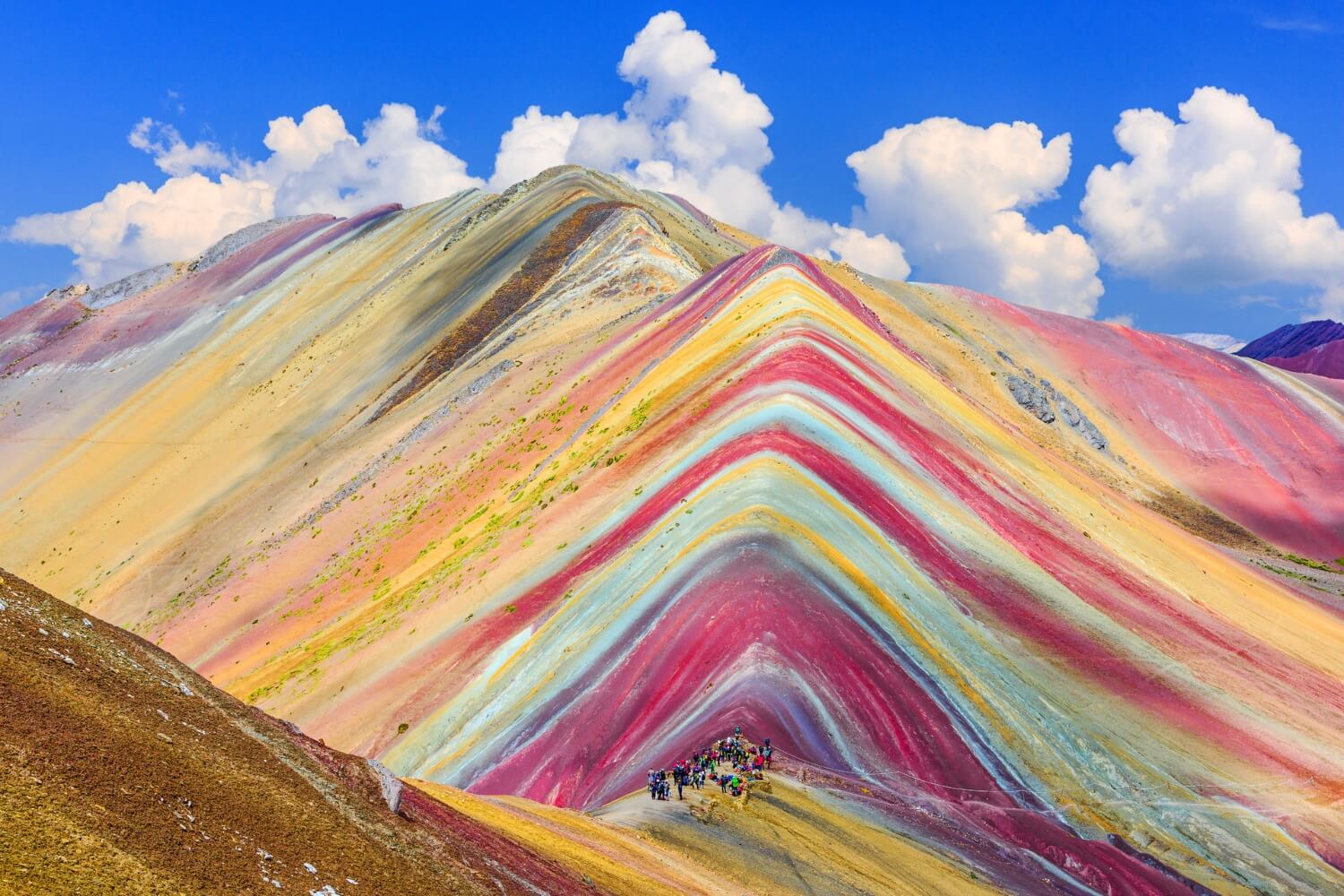
Peru offers a huge variety of geographical possibilities for travelers. You will be amazed at the contrasts of the diverse landscapes: golden sand dunes, massive snow-covered mountains, picturesque lakes, surreal beaches, eye-catching canyons, time-old agricultural terraces, dramatic mountain scenery, jaw-dropping glaciers, islands with various kinds of wildlife, miraculous Amazon rainforest, etc. Peru has so much to offer.
This is yet another iconic treasure in Peru, one that sits in the Cusco region and makes for an adventurous travel destination. You may have seen pictures of this incredible marvel as it is often raved about by Instagrammers and visitors who’ve seen it first-hand. The geological wonder of Vinicunca also known as the Mountain of Seven Colors (or, more simply, Peru’s “Rainbow Mountain”) was discovered when the snow covering it melted to reveal its natural beauty. The mountain’s bizarre marbling effect, the result of centuries of weathering, is a striking sight to behold. Waves of gold, red, lavender, and turquoise hues layered across the undulating landscape make for a surreal panorama.
If you’re not afraid of a moderate-to-challenging hike, this is the perfect adventure for you. A trek up the Vinicunca will require you to climb to high altitudes the mountain stands 5,200 meters above sea level. Plenty of tour guides and accompanying horses will be happy to take you there, and as you make the journey, you’ll catch sight of resident alpacas and llamas along the way.
In the less-visited north of Peru, you will find the Chachapoyas region. This wild part of the country is called the Upper Amazon, where the jungle and mountains intersect, and boy, is it a beauty. The natural centerpiece of this secluded cloud forest is Gocta Falls, one of the highest free-falling waterfalls in the world, known to locals for centuries but only “discovered” by a German explorer in 2005.
The waterfall can be seen from almost anywhere in the valley, but to appreciate its scale, you need to get a little closer. It is a steep hike to the base of the waterfall (and back) from the nearby town of Cocachimba, we recommend renting a horse to get past the halfway mark before completing the rest of the hike on foot. The scene at the bottom is nothing short of majestic, the decisive portion of the falls plummeting over 700 meters into a cool, mossy valley.
Speaking of the Colca Canyon, did you know that this fissure in the earth is twice as deep as the Grand Canyon in Arizona? With nearby active volcanoes, huge condors soaring overhead, traditional villages, epic hikes, and rows of neat Inca terraces, it’s equally worthy of a place on your bucket list. After a day of adventure, you can soothe your aches in one of the many hot springs found around the canyon, a result of seismic activity in the area.
The Colca Canyon is a river canyon located in southern Peru, approximately 4.5 hours from the popular city of Arequipa. For the local tribes that live there, the Colca Canyon is known as the natural habitat of the condors, symbol of the Hanan Pacha, or celestial world, in the Inca culture. Home to the Andes Mountains, it’s no surprise that Peru is full of wonderful hikes. But there is one trek that is quite special: the Colca Canyon trek. The deepest canyon in Peru, it is also the second deepest canyon in the world.
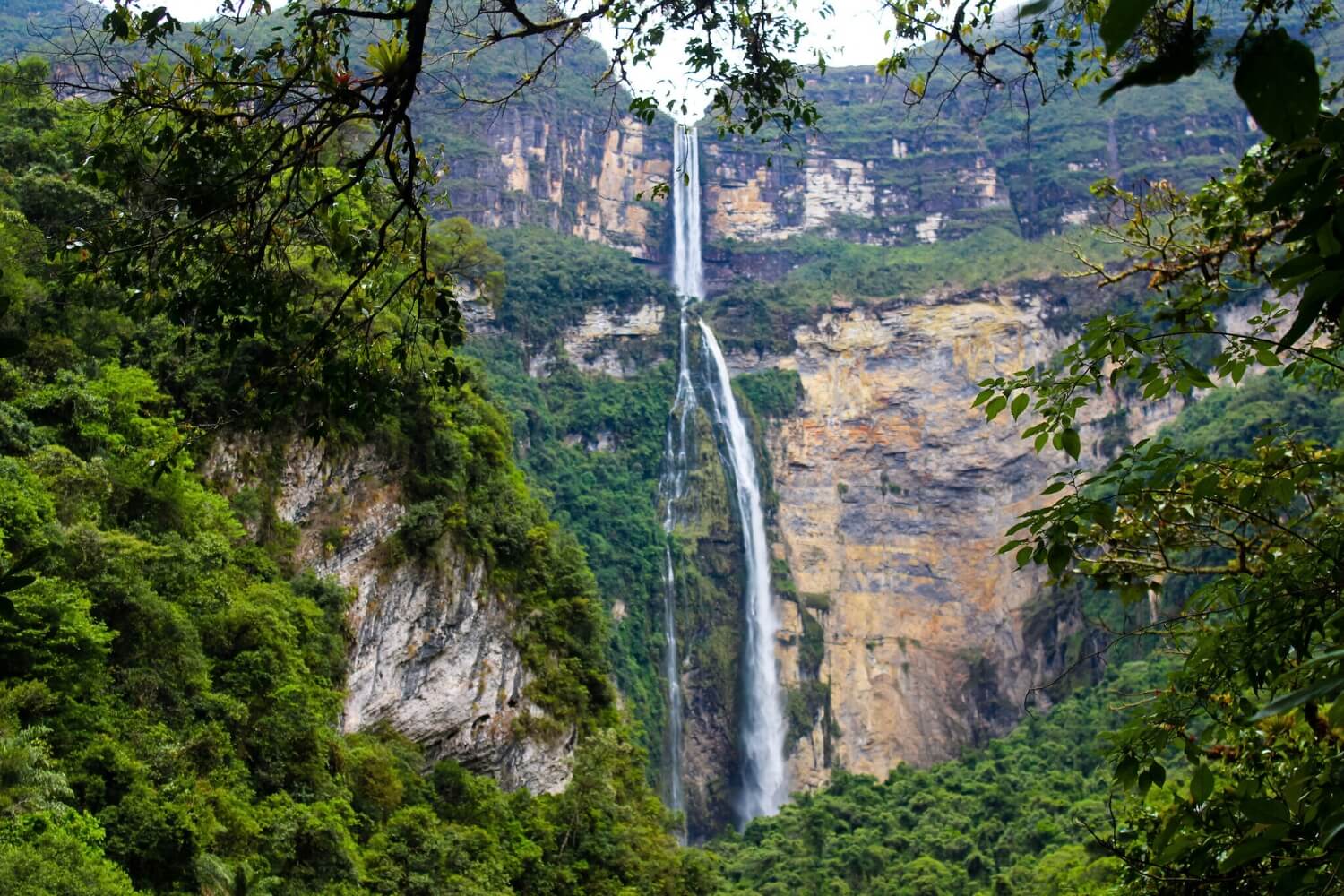
Lake Titicaca has become more and more of a draw in recent years, and for good reason. The world’s highest navigable lake is also a stronghold of indigenous Quechua and Aymara culture. The region’s colorful capital of Puno radiates out from the lakeshore and offers plenty of budget accommodations. But if you’re looking for something a little more luxurious, Relais & Chateaux’s Titilaka is about a half-hour outside the city on a secluded peninsula surrounded by little farming villages. Excursions and meals are built into the stay, and include activities like hikes and bike rides to pre-Columbian settlements and colonial towns and paddling through the marshes learning about the local birdlife. The signature experience, though, is a day out on the water on the lodge’s private yacht visiting the famous floating islands of the Uros people and hiking one of the actual islands, Taquile. After meeting the local inhabitants and learning about their way of life and traditional handicrafts, enjoy a gourmet lunch of dishes like lake trout with Andean mint and quinoa soup with farm-grown vegetables, all with panoramic views of the lake.
Lake Titicaca is believed to be the birthplace of the Inca civilization. Nowadays, people don’t travel to Lake Titicaca to learn about the Incas, but the Uros people instead. Why? The Uros people have built over 100 floating islands on Lake Titicaca, using only native plants grown in the lake and nothing but their hands. Talk about sustainability and impressive engineering! Most of the Uros people have moved off the floating islands, but there are still plenty that reside on them. Typically, a big island can fit up to 10 families and a small one can fit about 2 to 3. They even have a school on one of the islands.
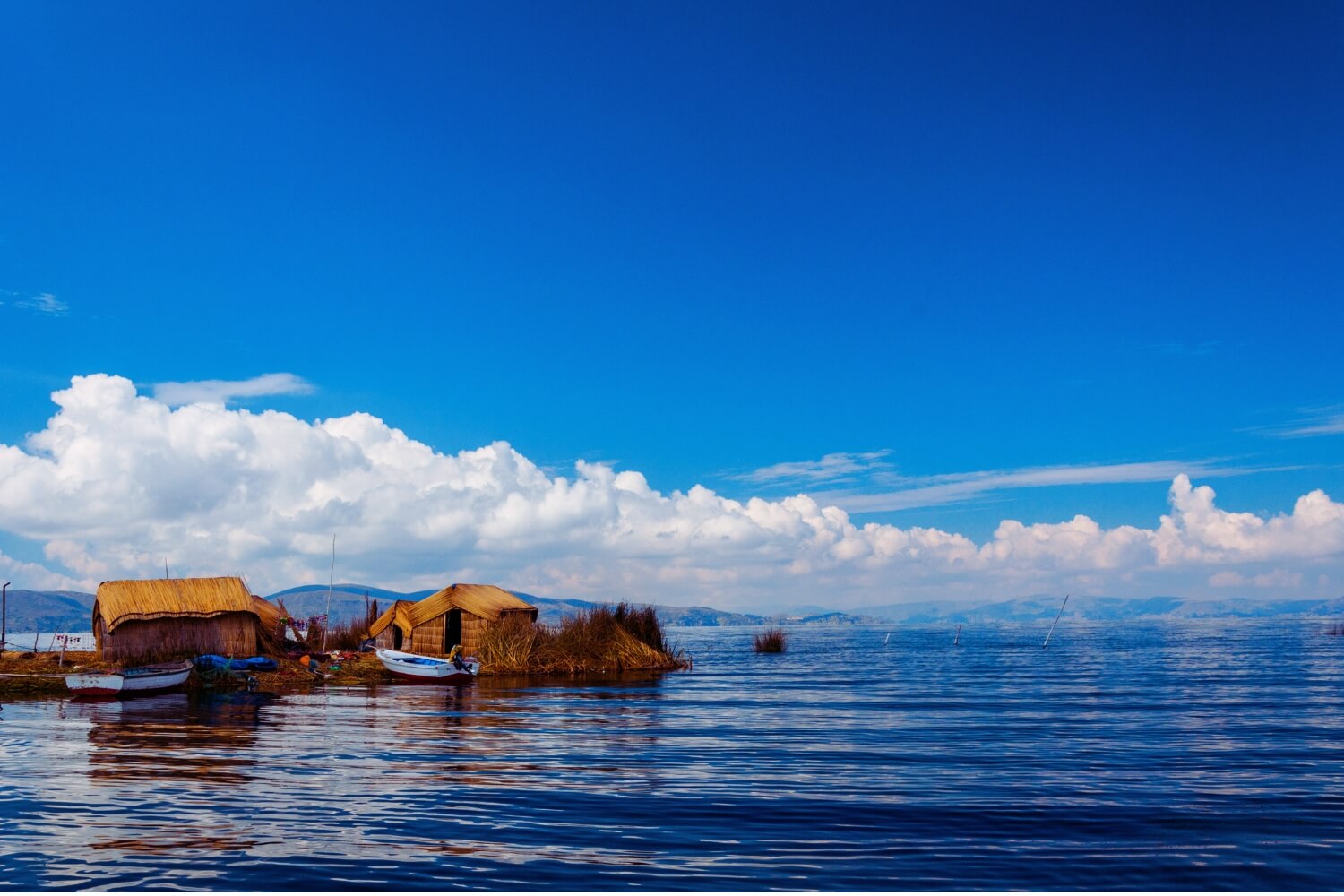
At a dizzying elevation of 3,400 meters in the Andes Mountains, you will find Cusco. The captivating former capital of the Inca Empire, it is often known as the launching point for travelers to get to Machu Picchu and the gateway to the Sacred Valley. But don’t write Cusco off as merely a short stop on your Peruvian journey! This city is an alluring mix of cobblestone streets, striking colonial-period architecture, and important landmarks that define its long and enduring history. There is much to see as you make your way through Cusco’s Plaza de Armas, the cultural center of the city lined with excellent restaurants, bars, and coffee shops, many of them boasting amazing views of the city.
Poke around the hilly streets and hidden gems appear. Many travelers who find themselves in Cusco will no doubt gravitate toward the artisan neighborhood of San Blas, its delightful blend of architecture and charming craft shops worth peeking into. The San Pedro Market is a great place to spend a morning perusing open-air stalls piled high with fresh produce and getting your fill of empanadas and tamales from the local vendors. On the outskirts of Cusco, you’ll encounter the Inca ruins of Tambomachay, believed to have once been a sacred water temple or Inca spa. Plenty of other ruins are scattered around the city, including the tiered fortification of Sacsayhuaman and the vast stretch of Pisac perched on a steep hillside.
One of the best reasons to visit Peru is to experience the famous Inca Trail to Machu Picchu. The Inca Trail is a historical 4-day trek that goes through some of the routes that the Inca civilization used to navigate through the Sacred Valley. The trail first takes you through snow-capped mountains of the Urubamba Range and ends in the deep cloud forest of Peru. Along the way, you can explore over 5 Inca ruins and learn about the history of the largest empire in Pre-Columbian America.
On the last day, you enter Machu Picchu not through the entrance, but through the Sun Gate. It is historically the only place where people could enter Machu Picchu, and many visitors were rejected because of their lack of royalty. Inca Trail is a cultural and historical experience that comes with an exhilarating hike and gorgeous mountainous views. Its uniqueness alone is worth visiting Peru! However, we do have to warn you that booking the Inca Trail 6+ months in advance is highly recommended. This is a world-famous attraction and its popularity cannot be underestimated.

If there is something that identifies Peru around the world, it is that it is crossed by a moving Andean landscape, in which snow-capped peaks and imposing mountains inspire tranquility, respect and a great desire to go exploring. Many tourists come to South America with the aim of climbing some challenging and beautiful peaks, but even if they have already climbed in the Alps or other mountain ranges, remember that the Andes have their peculiarities and you should always make your ascent with local guides who know them. good.
This protected area is home to the entire Cordillera Blanca, a mountain range where the highest snow-capped peak in Peru is located and other moving destinations, such as ravines with colored lagoons, centuries-old forests, and hundreds of glaciers. To start your adventure you must arrive in Huaraz, a small city where you will already begin to feel the adrenaline that awaits you once you see yourself surrounded by white and rocky peaks.
Depending on your level of training, you can choose tours of one or 10 days, the latter being the most difficult and demanding since you visit lagoons over 3,000m high, glaciers over 5,000m and mountains that will allow you to have a view awesome. Of course, to do it you must walk a lot, climb, rappel and get up early, so discipline and effort are very important. If you are not prepared, you can reach the lagoons in tours of three or four days, and you will have just as compelling satisfaction.
This mountain group counts among its 20 peaks the second highest in Peru, called Yerupajá, and unlike other ecotourism destinations, it has been minimally intervened and preserves an important environmental balance. Because it is so isolated from most of Peru’s major population centers, if you want to visit this area it is because you are a mountaineer at heart and enjoy untamed nature to the fullest.
To enter this protected area, your first destination will be the small and cold town of Chiquián, located over 3,000m high and easily reached from Huaraz or Lima. Once there begins the walk that even National Geographic has cataloged as one of the most beautiful and hard-working in the world. Get ready to venture into the remote Andes mountains for 10-15 days, as your legs and spirit strengthen and your eyesight never ceases to amaze. Although, again, there are always easier options for people with a medium level of training. Since the best time to visit the Cordillera Huayhuash is between April and October, we recommend you plan your trip ahead of time and start training hard so that you live a truly enriching and unforgettable experience.

If you are passing through the Sacred Valley and want to delve into its mountains, the magnificent Ausangate may be one of your best alternatives. This “Apu”, a Quechua name that means “sacred mountain” and which for the towns of the area has the connotation of a sacred site or sanctuary, is located an hour and a half from Cusco and several day excursions are organized from there to get to know it. During your tour you will find lagoons, mountain animals and, if you are lucky, you will be able to see the wonderful flight of a condor.
And if you want to enjoy the cultural manifestations of the area, you can visit this destination during the Quyllur Rit’i festivities, a religious pilgrimage that is celebrated before Corpus Christi and clearly demonstrates the permanence of indigenous traditions in the midst of Catholic practices. Here you can walk and ride a horse while you go through the typical landscapes of a hike in the Andes, visit ice caves and cross paths with families who really live in this privileged area, without luxuries but with an abundance of beauty at every turn. minute.
The Quelccaya glacier is located in the southeast of Peru, in the Vilcanota mountain range. It is characterized for being the largest tropical glacier in the world due to its 5,600 meters high and 44 square kilometers in length, approximately. In addition, it is one of the favorite destinations for professional mountaineers, who manage to conquer their peak. Cusco is one of the most surprising destinations in Peru. Here are incredible places like the Quelccaya glacier, which is ideal for practicing adventure sports and appreciating nature. Numerous species such as alpacas, llamas and vicuñas inhabit this majestic glacier, which are of great importance to the nearby populations of this area. Likewise, it is made up of U-shaped valleys, glacial striations in the volcanic rocks and beautiful lagoons.
On the other hand, in this territory you can carry out some recreational activities such as trekking and ice climbing or “andinismo”, which have been carried out in this area for some years. It is recommended to be accompanied by a guide to avoid any inconvenience. Some peasant communities live near the Quelccaya glacier, who, through their knowledge and traditions from their ancestors, seek the conservation of this sacred place. According to some of its inhabitants, Quelccaya is of great importance for their gratitude rituals. Likewise, during your visit to this wonderful glacier you will be able to meet and interact with some of these communities and acquire several of their handicrafts made with Alpaca. Likewise, you will have the opportunity to listen to the different myths and legends that are part of their oral tradition.
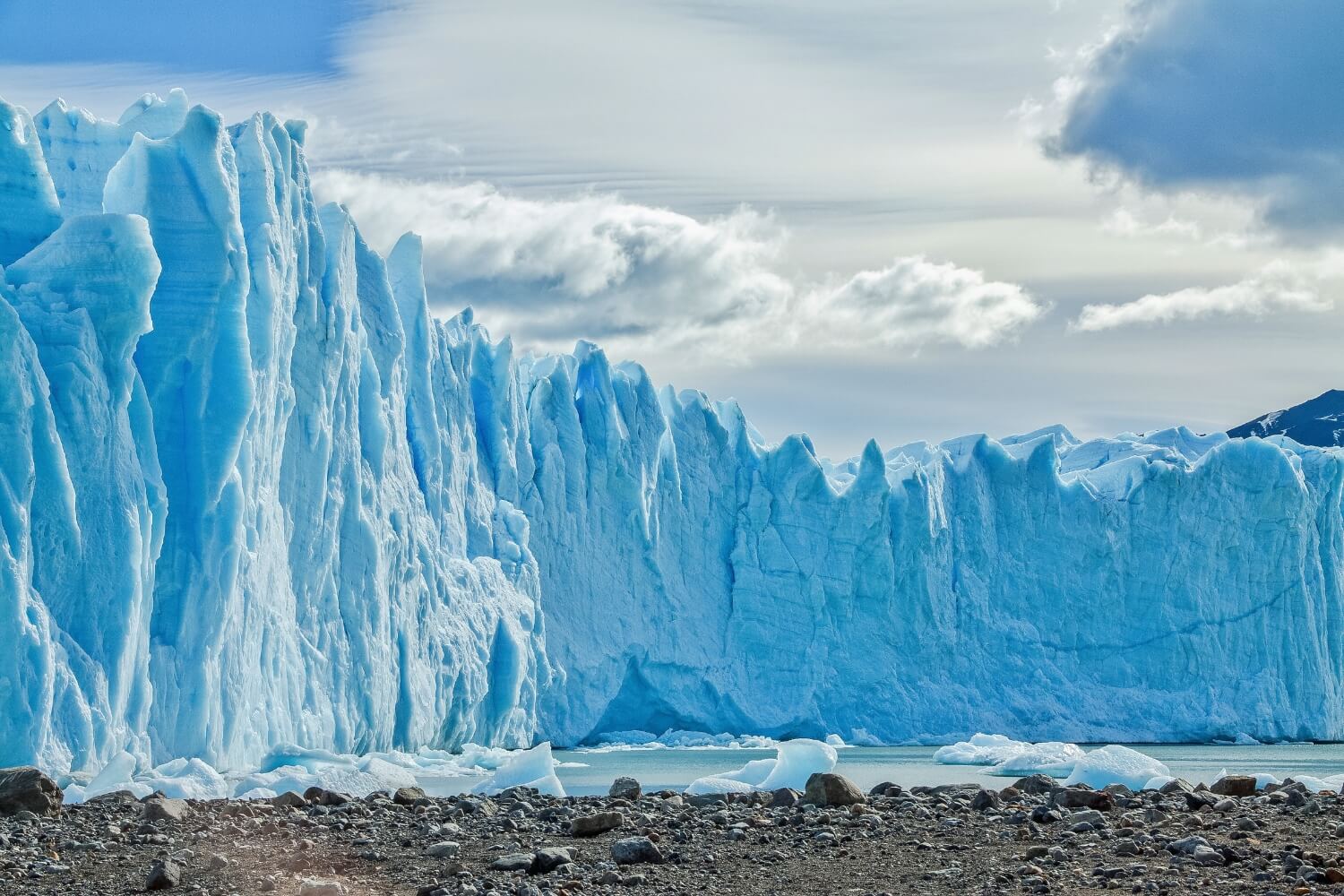
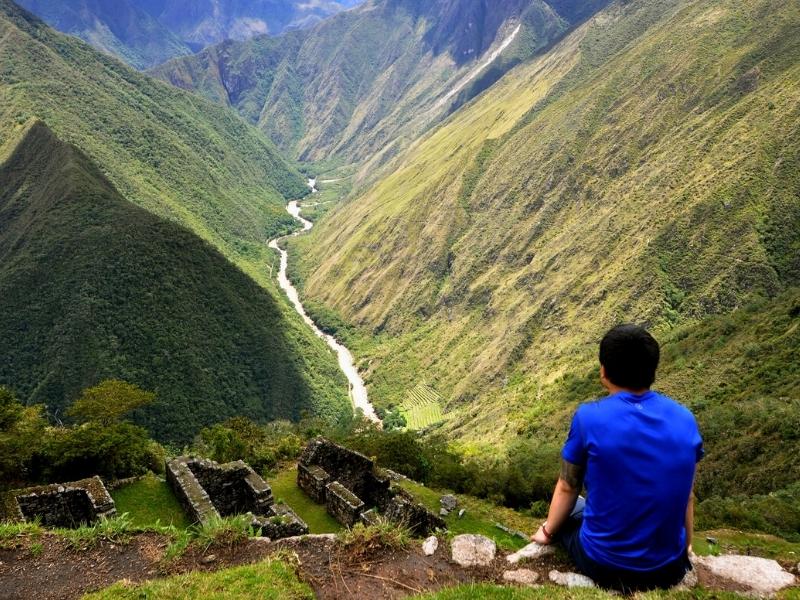
Explore the Manu Amazon Rainforest & Inca Trail hike to Machu Picchu, you will enjoy the best adventures in Peru, exploring amazing inca trail routes and the best amazon wildlife with our local tour guides, in small groups.
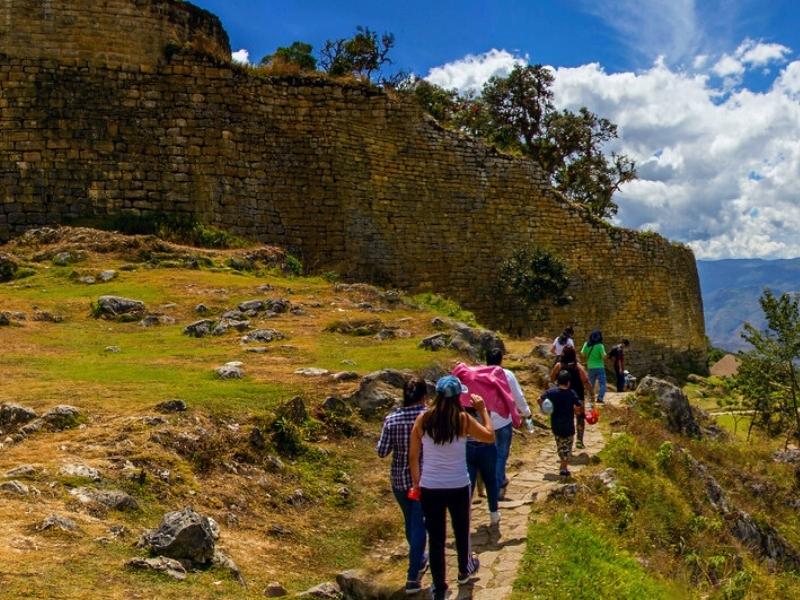
Visit Peru with your family or friends, and enjoy the best natural and cultural wonders. In this tour you will discover the best of northern Peru, where is one of the highest waterfalls in South America, the fortress of Kuelap, and the short route to Machu Picchu through an Inca trail, enjoying the empire of the Incas in all its greatness.

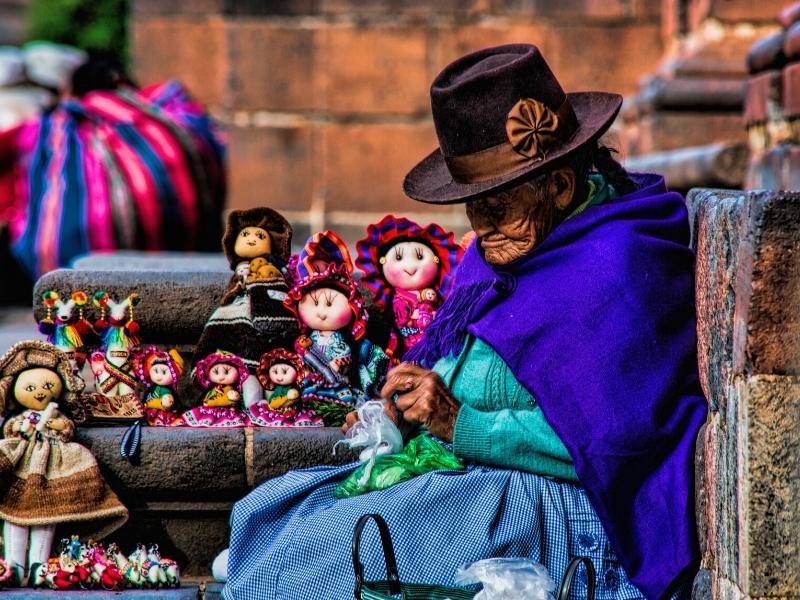
Peru is a multicultural country, and megadiverse, because it has different ecological floors, which have special microclimates, where ancient civilizations dominated the cold landscape of the Andes, and the hot coasts of the Pacific. It is also part of the great Amazon forest where a great variety of unique animals and plants coexist. This tour will take you to the most impressive landscapes in South America.


Enjoy an incredible vacation, in the heart of the Inca empire, Cusco, our travel program will take you to the most famous tourist attractions of Cusco, such as the Sacred Valley of the Incas, Machu Picchu, in very cozy hotels.

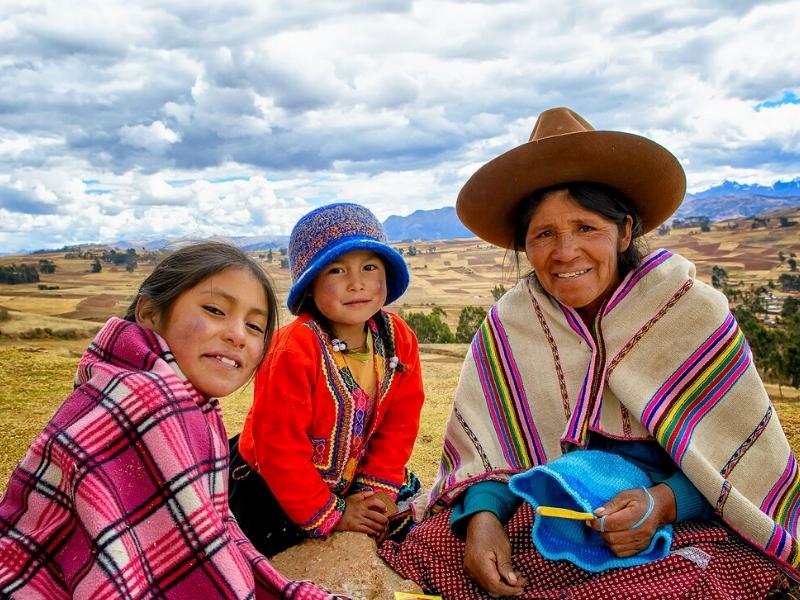
The top sights of Peru will leave all the family thrilled by the scenic grandeur, ruined temples, colonial cities, amazing inca trail to Machu Picchu, the Inca Lost City, once buried under the tropical forest which surrounds it.


The classic Inca Trail hike to Machu Picchu is one of the world's greatest hikes. Along the 45 km you will explore unique andean valleys, lush mountain forest.An exquisite architecture of the Inca sanctuaries, which will dazzle you for its fineness and location within the Andes.